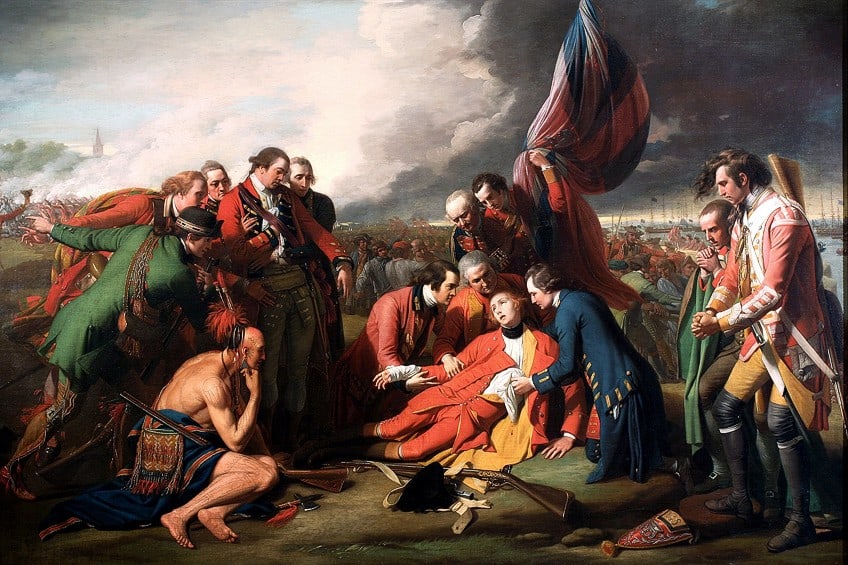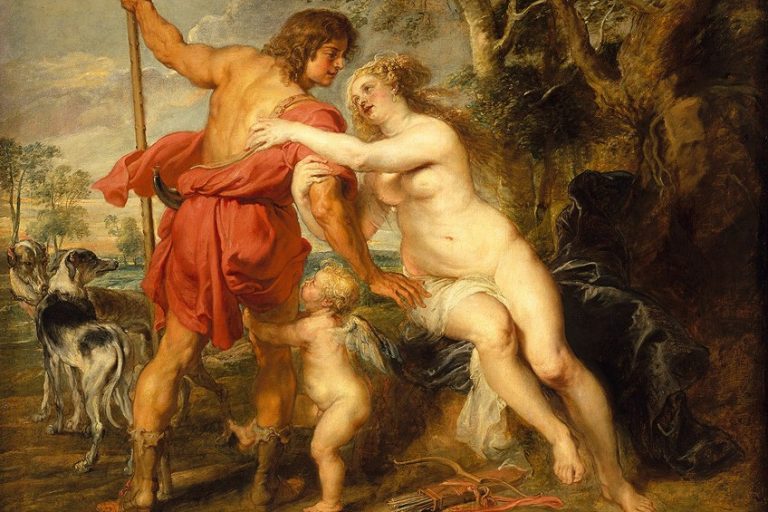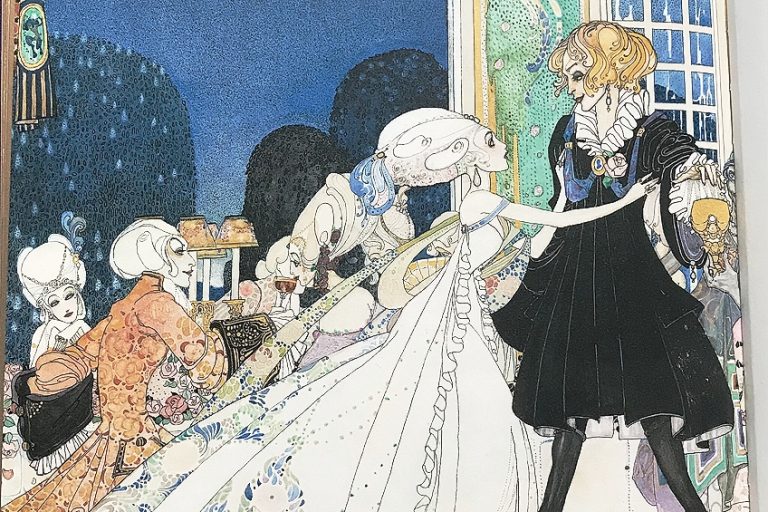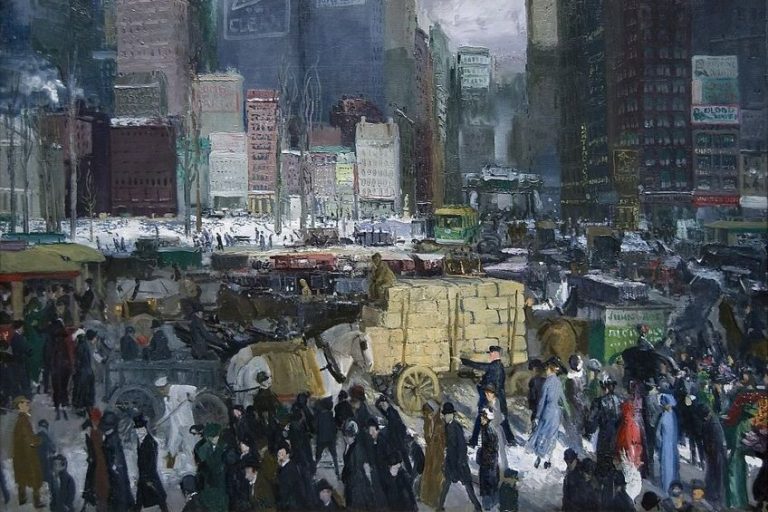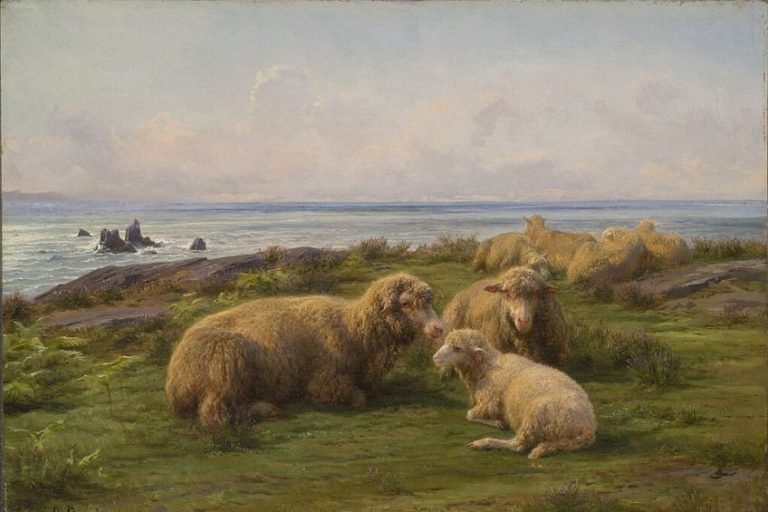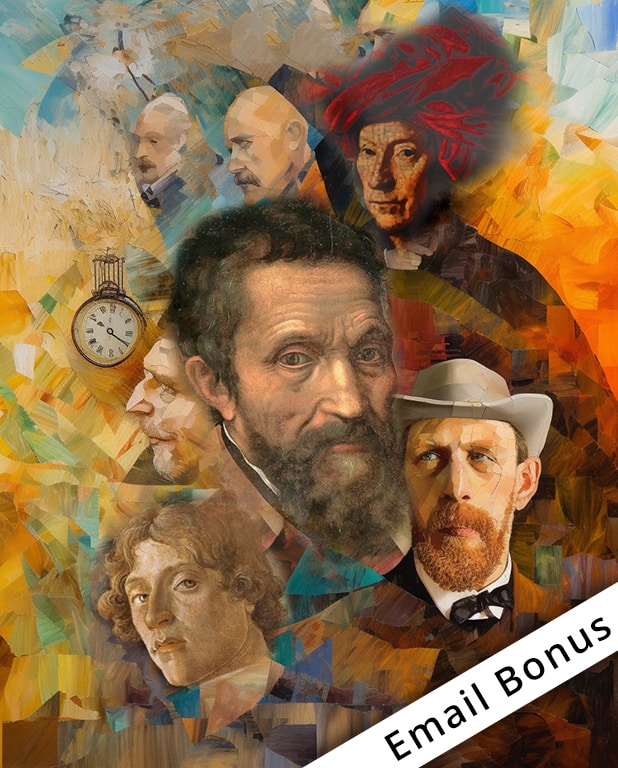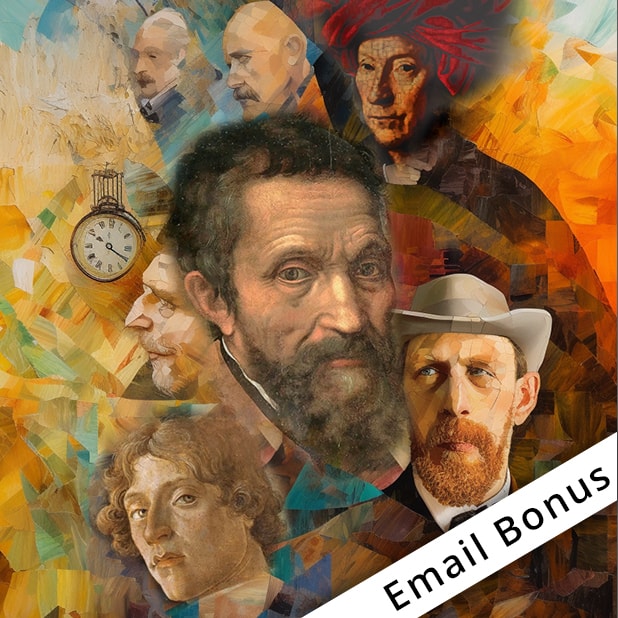Famous Neoclassical Artists – Masters of 18th Century Art
Neoclassical art emerged in the mid-18th century as a reaction against the excesses of the Baroque and Rococo styles, drawing inspiration from the classical art and culture of ancient Greece and Rome. Emphasizing harmony, simplicity, and idealized beauty, Neoclassicism became a dominant movement in European art, especially in France, where it was closely tied to the Enlightenment and political revolutions. Famous Neoclassical artists like Jacques-Louis David, Jean-Auguste-Dominique Ingres, and Antonio Canova led the movement, creating works that glorified civic virtues, heroism, and moral clarity, often reflecting the values of reason and order.
Key Takeaways
- Neoclassical art revived classical antiquity ideals.
- Jacques-Louis David and Antonio Canova were key figures.
- The movement influenced future art and movements.
Origins of Neoclassicism
As an influential art movement of the 18th and 19th centuries, Neoclassicism sought to revive the ideals of classical antiquity. This period was marked by an emphasis on simplicity, symmetry, and an idealized portrayal of subjects, drawing inspiration from ancient Greek and Roman art. Painters and sculptors of the Neoclassical era created works that continue to be celebrated for their technical precision and intellectual depth.
Inspired by the archaeological discoveries of the time, such as the ruins of Pompeii, Neoclassical artists like Jacques-Louis David and Antonio Canova produced masterpieces that encapsulated the virtues and aesthetics of the classical world.
Jacques-Louis David’s paintings, in particular, exemplify the moral and civic virtues championed by the Neoclassical movement, making him a prominent figure in this artistic renaissance. The impact of Neoclassical art extended far beyond its time, influencing movements and artists to come. By reinterpreting classical themes and styles, these artists not only paid homage to the past but also laid the groundwork for future artistic innovations. Whether through the stoic figures of David or the sculpted forms of Canova, Neoclassicism remains a testament to the enduring allure of classical beauty.
Enlightenment Influence
Neoclassicism thrived during the Age of Enlightenment, a period characterized by a focus on reason, scientific inquiry, and a return to classical knowledge. Enlightenment thinkers like Voltaire and Rousseau criticized the excesses and irrationality of previous artistic styles, calling for a return to the perceived purity and rationality of ancient art.
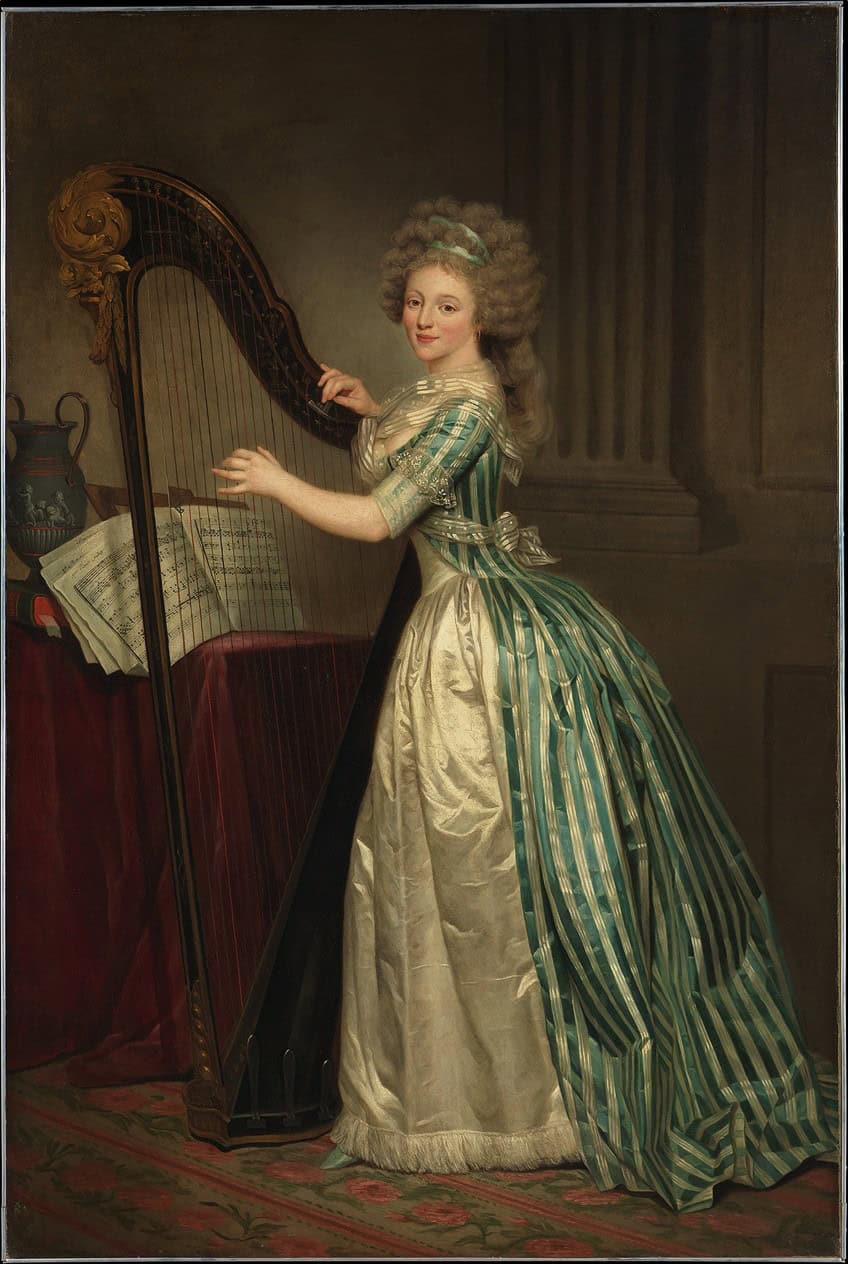
Artists adopted these principles by emphasizing clarity, order, and symmetry in their works. They strove to portray ideal beauty and moral virtue, aligning their artistic goals with the Enlightenment’s emphasis on rationality and civic responsibility. These ideals influenced not only visual arts but also literature, architecture, and music of the time.
Reaction Against Rococo
Rococo art, which dominated Europe in the early 18th century, was characterized by elaborate ornamentation, intricate details, and light-hearted themes. By the mid-1700s, many artists and intellectuals saw Rococo as overly decorative and superficial, lacking the moral seriousness and intellectual rigor they sought.
Neoclassicism emerged in direct opposition to this style, seeking to replace Rococo’s frivolity with the gravitas of classical themes.
Artists began to focus on historical and mythological subjects, depicting scenes of heroism and virtue. They employed simpler lines and restrained color palettes, contributing to a more serious and dignified aesthetic.
Classical Antiquity Inspiration
A significant catalyst for the Neoclassical movement was the renewed interest in Classical antiquity. This interest was fueled by archaeological discoveries in places like Pompeii and Herculaneum, which revealed treasures of ancient Greek and Roman art.
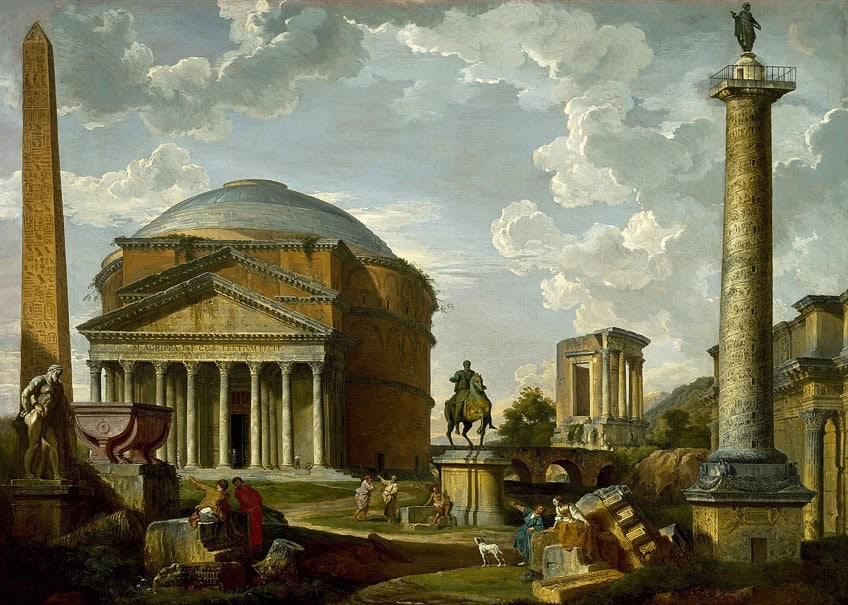
These discoveries had a tremendous impact on European artists, who saw in Classical art a model of perfection and timeless beauty. They studied ancient statues, architectural styles, and texts to incorporate these elements into their work. This reverence for the past led to a revival of classical forms and themes, laying the foundation for Neoclassicism’s enduring legacy in the arts.
Key Neoclassical Artists
This section will explore some of the most influential artists in the Neoclassical movement, highlighting their key works and contributions to the era.
Benjamin West (1738 – 1820)
| Birth | October 10, 1738 |
| Death | March 11, 1820 |
| Place of Birth | Springfield, Pennsylvania, United States |
Benjamin West, an American-born artist who became a key figure in British art, played a crucial role in the Neoclassical movement. His painting, The Death of General Wolfe (1770), is famous for its blend of contemporary realism with classical composition, depicting a modern historical event in a dramatic, organized manner.
West also created works such as Penn’s Treaty with the Indians (1771 – 1772) and The Expulsion of Adam and Eve from Paradise (1791), which reflect his ability to weave narrative and historical themes into his work.
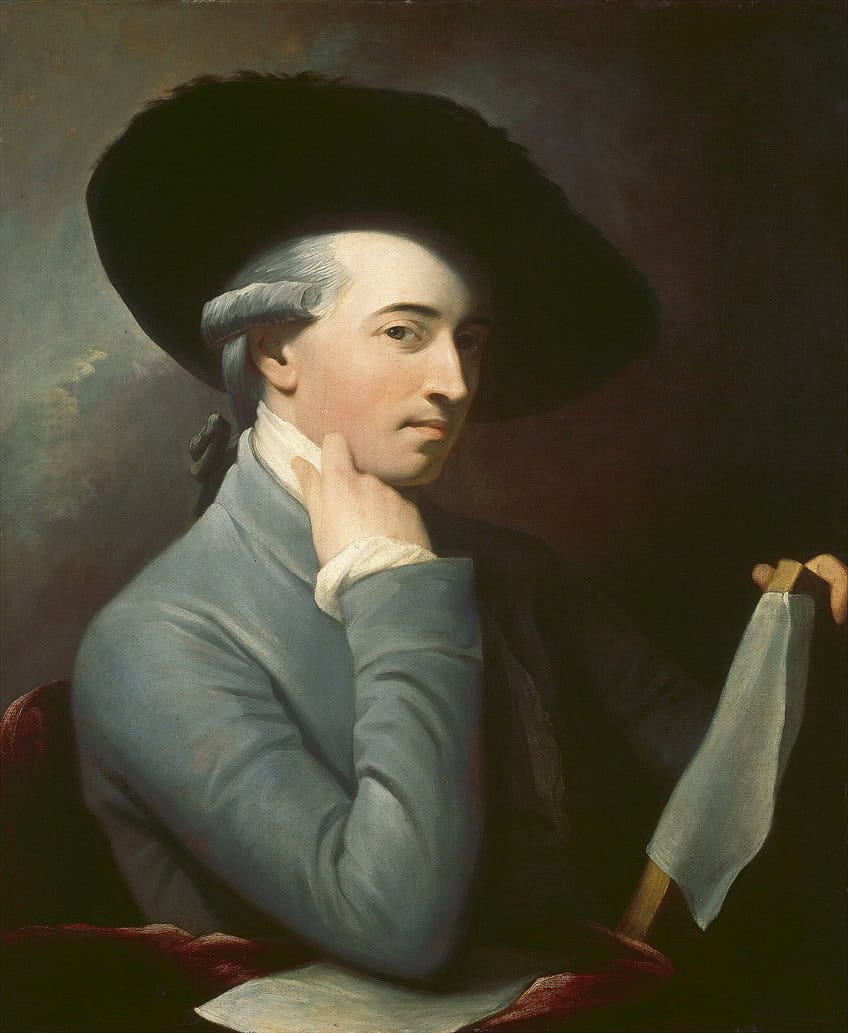
Angelica Kauffmann (1741 – 1807)
| Birth | October 30, 1741 |
| Death | November 5, 1807 |
| Place of Birth | Chur, Switzerland |
Angelica Kauffmann was a Swiss-Austrian Neoclassical painter known for her historical and allegorical works. Her painting, Cornelia, Mother of the Gracchi (1785) is a noted example, portraying Roman virtue through the story of Cornelia presenting her sons as her treasures.
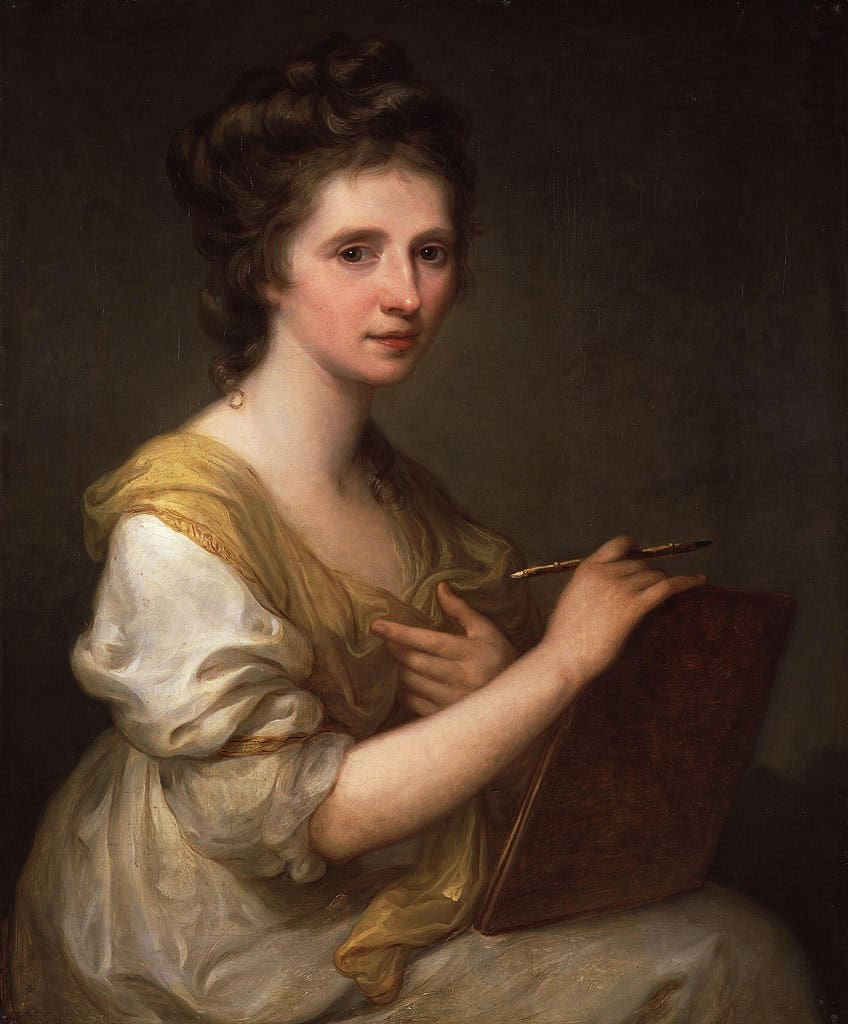
Kauffmann was a founding member of the Royal Academy in London, highlighting her esteemed status in the art community. Other notable works include Design (1780) and Coriolanus at the Feet of His Mother (1791), which feature her refined technique and classical subject matter.
Jacques-Louis David (1748 – 1825)
| Birth | August 30, 1748 |
| Death | December 29, 1825 |
| Place of Birth | Paris, France |
Jacques-Louis David was a pivotal figure in Neoclassical art. He is renowned for his work, Oath of the Horatii (1784), which embodied the ideals of patriotism and stoicism prevalent during the French Revolution. David’s art often communicated political messages, aligning with his active role in revolutionary France.
Other significant works by David include The Death of Marat (1793) and The Coronation of Napoleon (1807), both of which display his mastery in depicting dramatic historical scenes with precise detail and emotional depth.
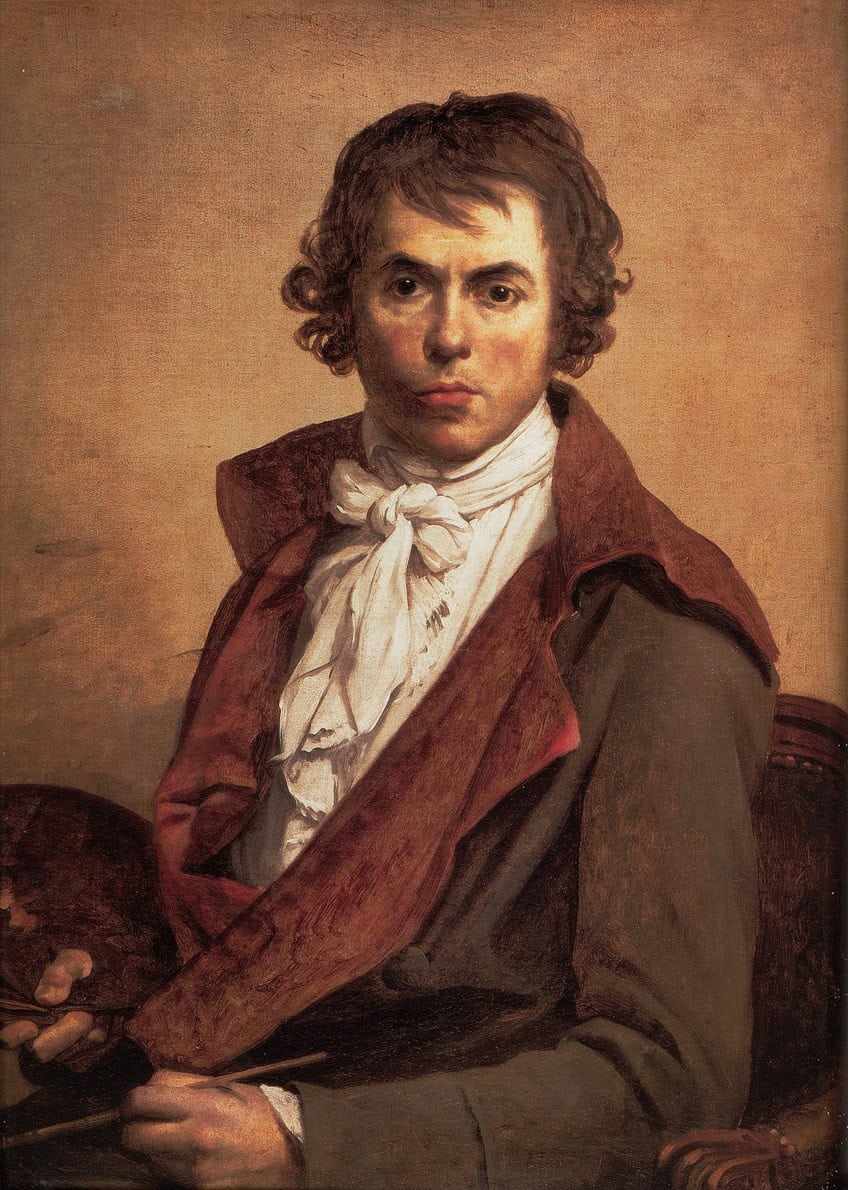
Élisabeth Louise Vigée Le Brun (1755 – 1842)
| Birth | April 16, 1755 |
| Death | March 30, 1842 |
| Place of Birth | Paris, France |
Élisabeth Louise Vigée Le Brun, often remembered for her portraits of European aristocracy, was one of the most prominent female artists of her time. Her painting, Marie Antoinette and Her Children (1787), captures the queen in a domestic, gentle light, aimed at softening her public image.
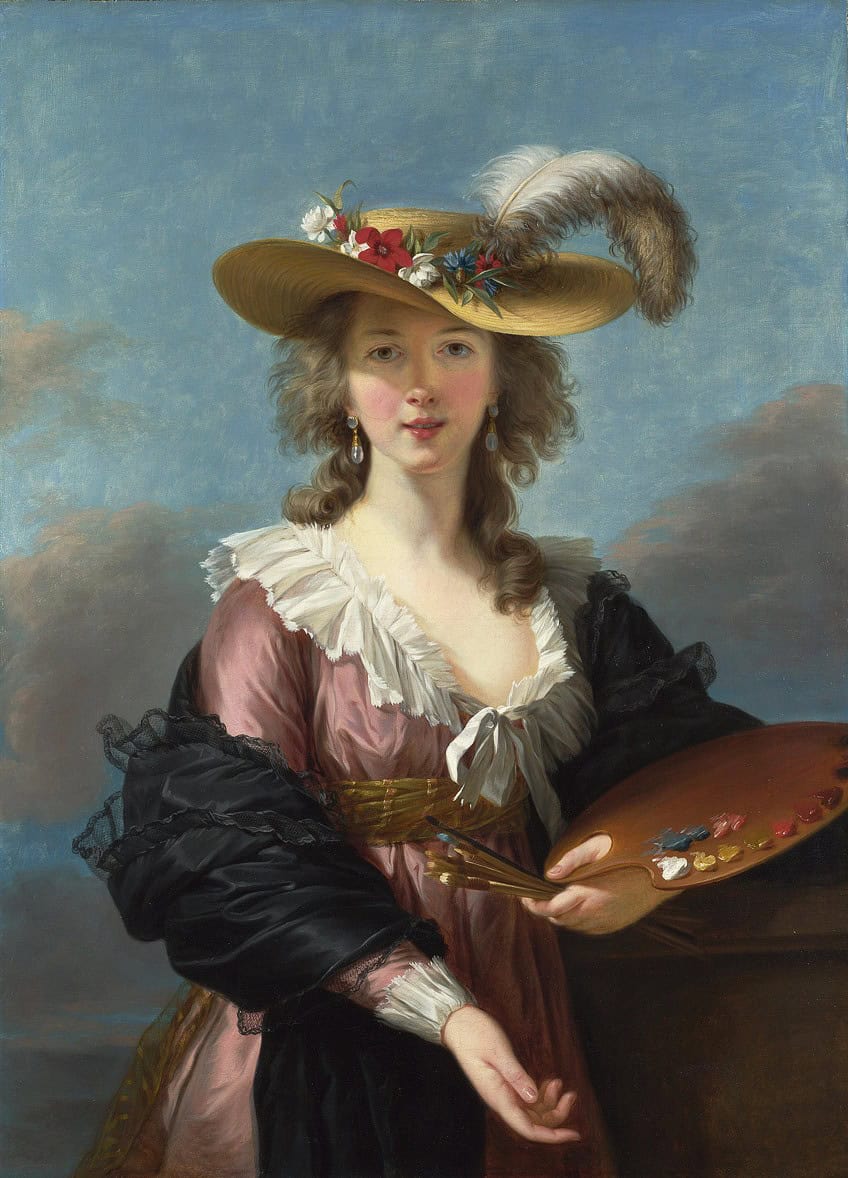
Vigée Le Brun’s portraits, marked by their elegance and naturalism, include works like Self-Portrait with Her Daughter Julie (1789) and Portrait of Madame Grand (1783), effectively showcasing her skill in capturing both likeness and personality.
Antonio Canova (1757 – 1822)
| Birth | November 1, 1757 |
| Death | October 13, 1822 |
| Place of Birth | Possagno, Italy |
Antonio Canova was an Italian sculptor, celebrated for his marble works that revived classical traditions. One of his most famous sculptures is Paolina Borghese Bonaparte as Venus Victrix (1805 – 1808), noted for its lifelike representation and elegant form. Canova’s skill in creating smooth, polished surfaces and his ability to capture human anatomy distinguished his work.
Other notable sculptures include Psyche Revived by Cupid’s Kiss (1787 – 1793) and The Three Graces (1814 – 1817), both of which exemplify his classical approach and influence on Neoclassical art.
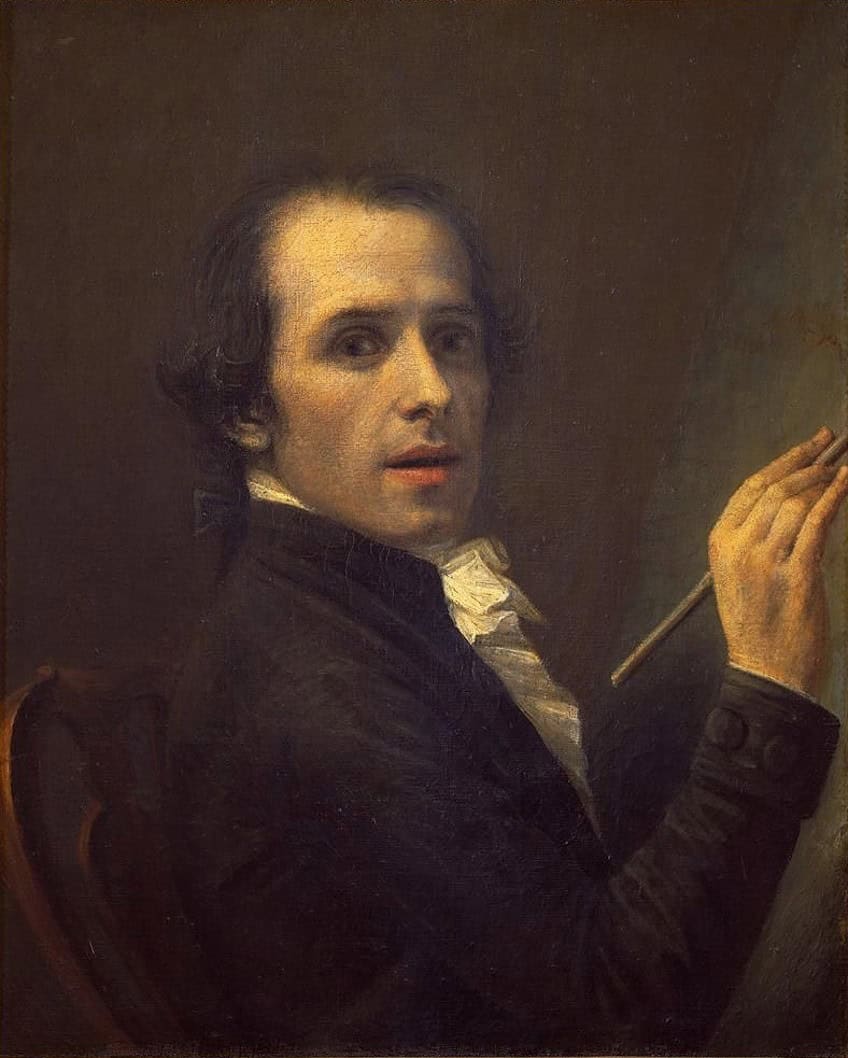
Jean-Auguste-Dominique Ingres (1780 – 1867)
| Birth | August 29, 1780 |
| Death | January 14, 1867 |
| Place of Birth | Montauban, France |
Jean-Auguste-Dominique Ingres, a French painter, carried forward the legacy of Neoclassical art into the 19th century. Ingres is best known for his painting, The Turkish Bath (1852 – 1862), which showcases his talent in creating intricate and precise compositions.
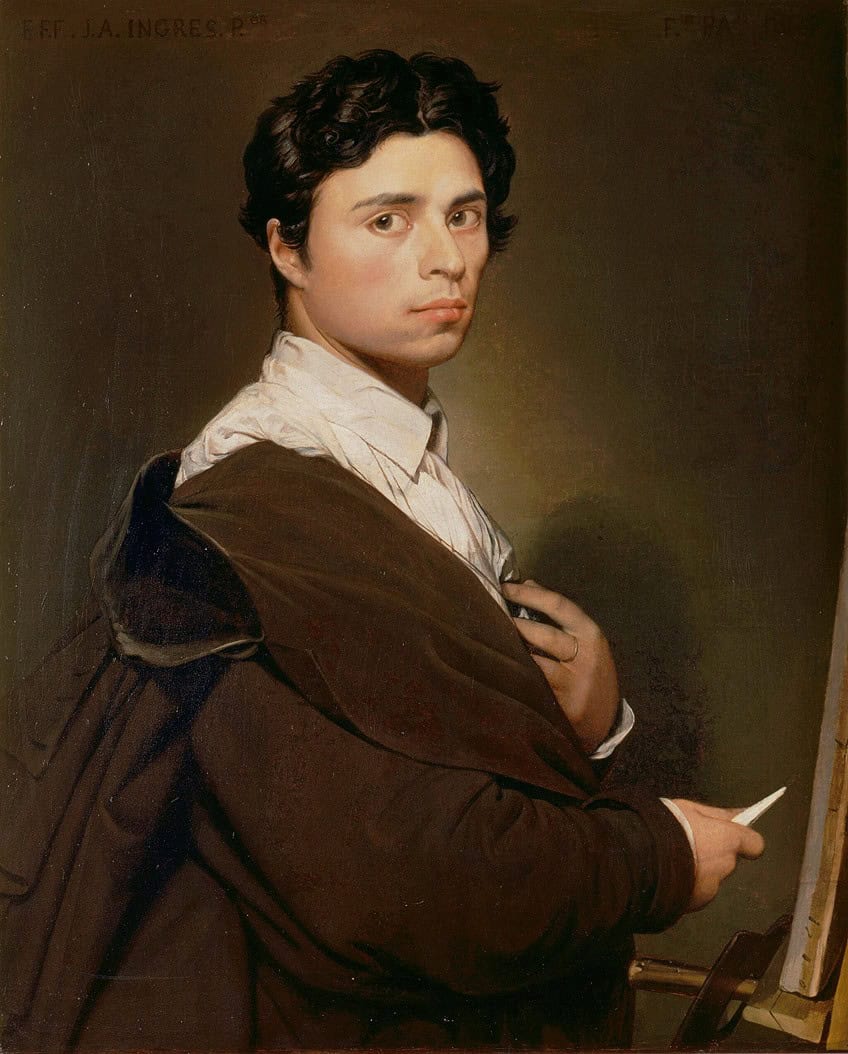
He was a student of David and was influenced by his mentor’s focus on historical accuracy and linear clarity. His other significant works include Grande Odalisque (1814) and Napoleon I on His Imperial Throne (1806), which stand out for their detailed brushwork and classical themes.
William-Adolphe Bouguereau (1825 – 1905)
| Birth | November 30, 1825 |
| Death | August 19, 1905 |
| Place of Birth | La Rochelle, France |
William-Adolphe Bouguereau was a French painter who blended Neoclassical themes with a more sensual, romantic style. Bouguereau’s famous painting, The Birth of Venus (1879), is a perfect example, depicting the goddess Venus rising from the sea with remarkable detail and soft, realistic textures. His works often emphasize beauty, grace, and the human form, making him popular during his time.
Other important works by Bouguereau include Nymphs and Satyr (1873) and The First Mourning (1888), both displaying his exceptional skill in rendering the human figure.
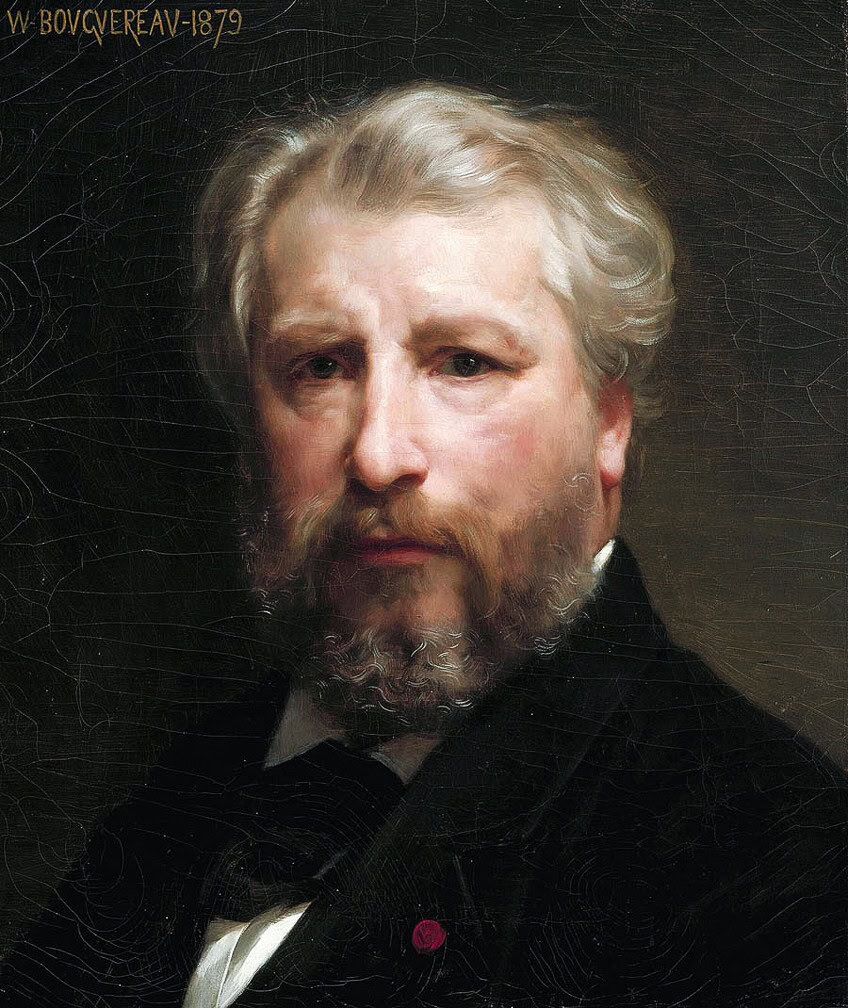
Prominent Artworks and Analysis
This section examines key Neoclassical artworks, highlighting their historical significance and artistic features. Each piece represents pivotal moments in the Neoclassical movement and reflects the broader cultural and political contexts of its time.
The Death of General Wolfe (1770)
| Artist | Benjamin West |
| Date | 1770 |
| Medium | Oil on canvas |
| Location | National Gallery of Canada, Ottawa, Canada |
Benjamin West’s The Death of General Wolfe captures the dramatic moment of General James Wolfe’s demise during the Battle of Quebec. This work is notable for its historical accuracy and emotional resonance. Unlike traditional allegorical representations, West chose to depict contemporary figures in authentic military attire, emphasizing realism. The somber mood and meticulous detail highlight the heroism and sacrifice of Wolfe, making it a significant piece in the context of historical Neoclassical art.
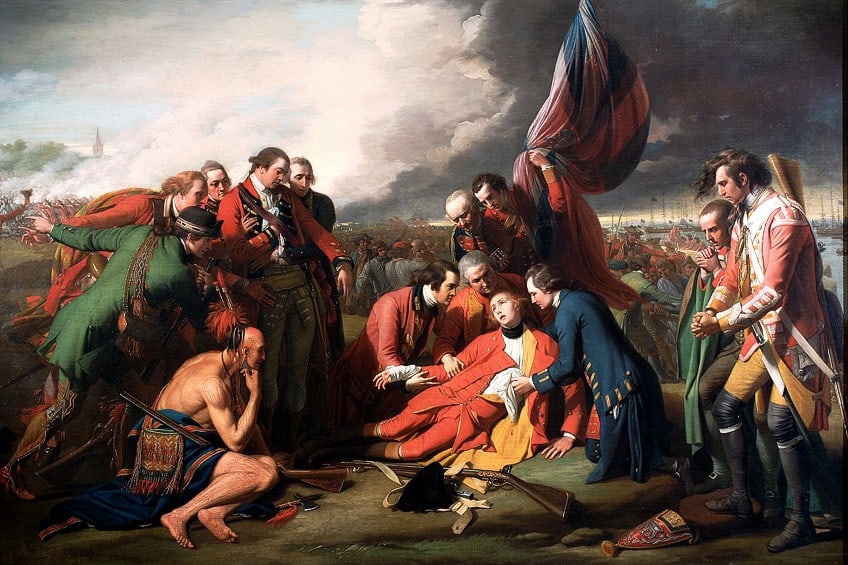
Telemachus and the Nymphs of Calypso (1782)
| Artist | Angelica Kauffman |
| Date | 1782 |
| Medium | Oil on canvas |
| Location | The Metropolitan Museum of Art, New York City, United States |
Angelica Kauffman’s Telemachus and the Nymphs of Calypso (1782) illustrates a scene from François Fénelon’s Les Aventures de Télémaque. The painting showcases Telemachus, the son of Odysseus, resisting the temptations of Calypso’s nymphs. Kauffman’s work reflects Neoclassical themes of virtue and moral enlightenment.
The clear, linear composition and harmonious colors reinforce the narrative’s focus on ethical fortitude and intellectual clarity, hallmarks of Neoclassical art.

Marie Antoinette with a Rose (1783)
| Artist | Élisabeth Vigée Le Brun |
| Date | 1783 |
| Medium | Oil on canvas |
| Location | Palace of Versailles, Versailles, France |
Painted by Élisabeth Vigée Le Brun in 1783, Marie Antoinette with a Rose presents the French queen in a serene and naturalistic manner. The soft lighting and elegant composition humanize the often controversial figure of Marie Antoinette.
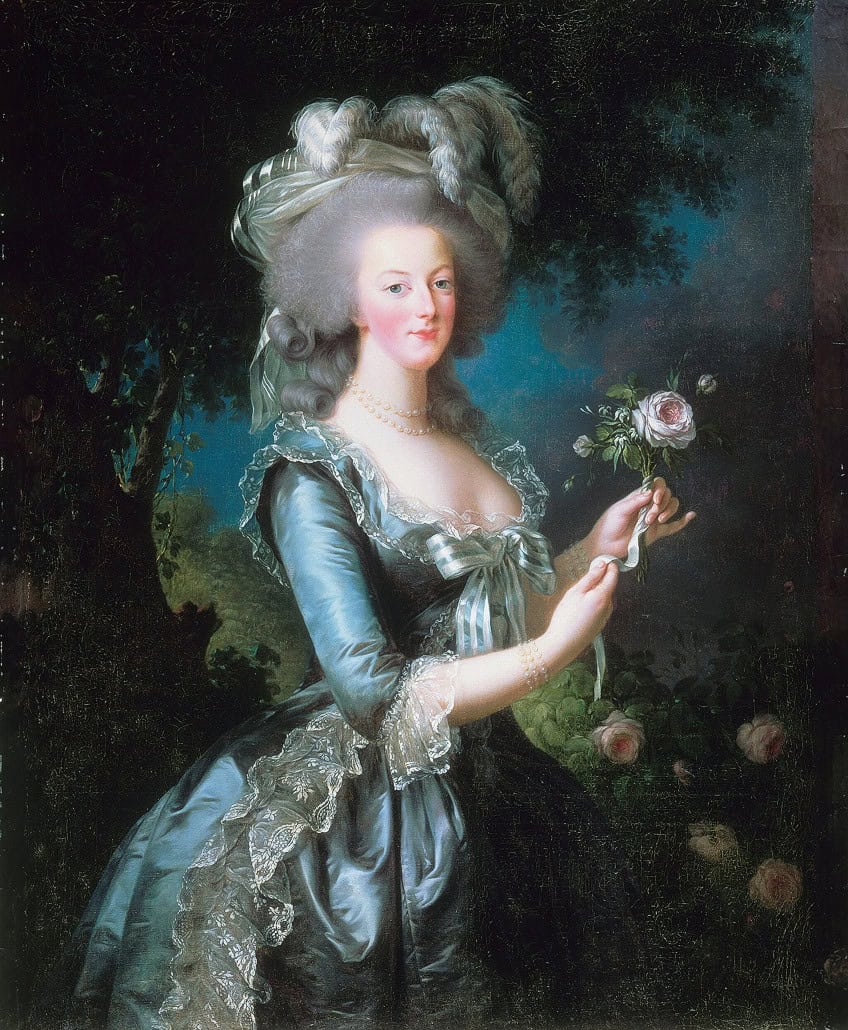
This portrait adheres to Neoclassical principles with its subtle use of symbolism, such as the rose representing femininity and grace. Vigée Le Brun’s meticulous attention to detail and refined technique underscore her importance as a leading female artist of the period.
The Oath of the Horatii (1784)
| Artist | Jacques-Louis David |
| Date | 1784 |
| Medium | Oil on canvas |
| Location | Louvre Museum, Paris, France |
Painted by Jacques-Louis David in 1784, The Oath of the Horatii exemplifies Neoclassical ideals through its depiction of Roman patriotism and duty. The painting portrays three brothers swearing an oath to defend Rome, emphasizing stoic heroism and sacrifice. The use of stark lines and a balanced composition underscores the gravity of the scene.
The dramatic lighting and clarity of form are focused on the solemn exchange between father and sons, making it a cornerstone of Neoclassical art.
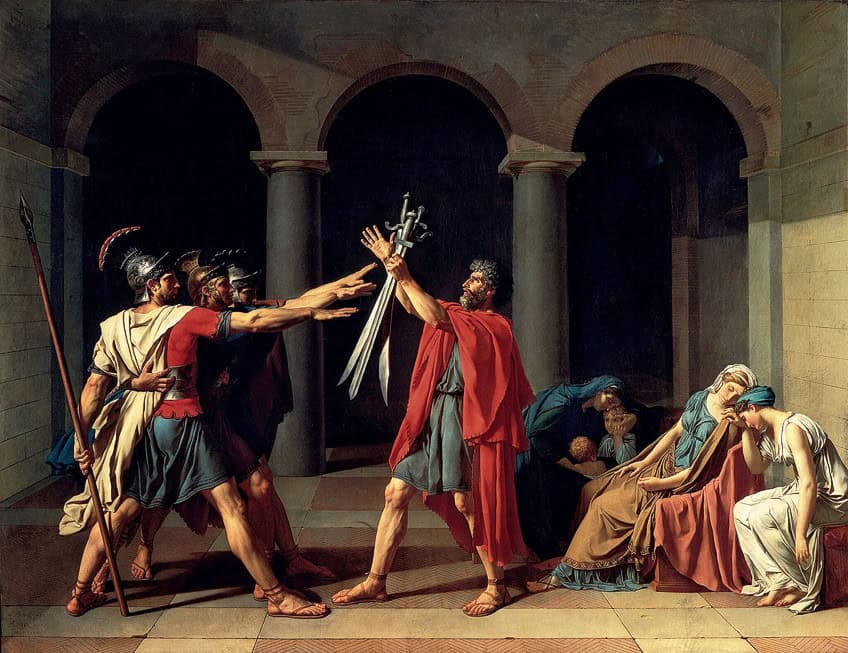
Psyche Revived by Cupid’s Kiss (1793)
| Artist | Antonio Canova |
| Date | 1793 |
| Medium | Marble |
| Location | Louvre Museum, Paris, France |
Antonio Canova’s Psyche Revived by Cupid’s Kiss captures a tender moment from the myth of Cupid and Psyche. This marble sculpture exemplifies Neoclassical aesthetics with its idealized forms and focus on emotional expression.

Cupid’s gentle touch and Psyche’s lifelike reaction illustrate the skillful rendering of human anatomy and emotion. The work’s smooth finish and flowing lines demonstrate the Neoclassical emphasis on beauty and harmony, contrasting with the dramatic intensity of the Baroque.
The Apotheosis of Homer (1826 – 1827)
| Artist | Jean-Auguste-Dominique Ingres |
| Date | 1826 – 1827 |
| Medium | Oil on canvas |
| Location | Louvre Museum, Paris, France |
Created by Jean-Auguste-Dominique Ingres in 1827, The Apotheosis of Homer is a homage to ancient Greek culture. The painting features Homer being crowned by a winged figure, surrounded by renowned poets and philosophers. The composition is structured to mirror Classical friezes, with precise lines and balanced harmony.
Ingres’s restrained color palette and meticulous detail embody Neoclassical reverence for antiquity and intellectual achievement, celebrating the enduring legacy of classical knowledge.

The Birth of Venus (1879)
| Artist | William-Adolphe Bouguereau |
| Date | 1879 |
| Medium | Oil on canvas |
| Location | Musée d’Orsay, Paris, France |
William-Adolphe Bouguereau’s The Birth of Venus showcases the goddess Venus reclining in a seashell, surrounded by playful cherubs. The painting’s sensuality and idealized beauty align with Neoclassical traditions of reviving classical mythology.
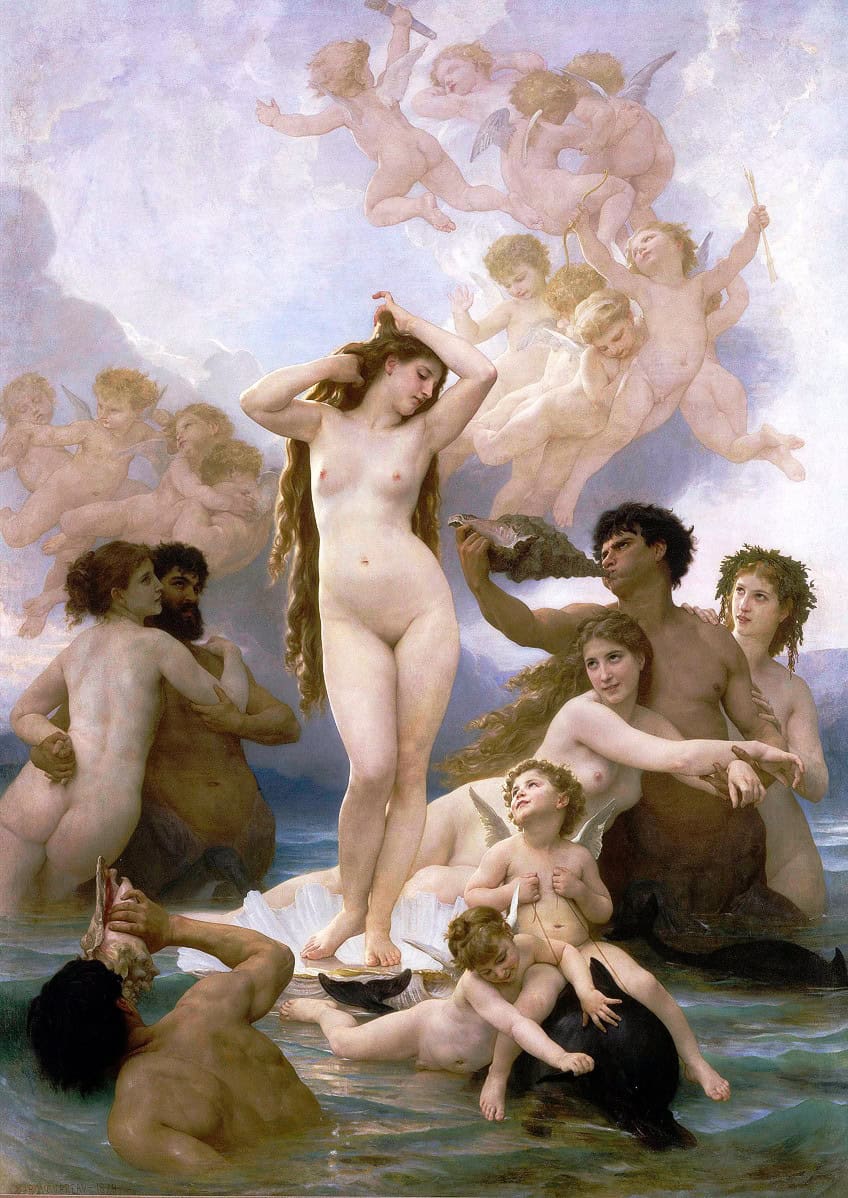
The soft, pastel hues and delicate brushwork emphasize Venus’s divine grace. Bouguereau’s interpretation reflects a blend of academic precision and romantic nuance, making it a quintessential example of late Neoclassical art drawing on Renaissance inspiration.
Influence and Legacy
Neoclassical artists significantly impacted both modern art and cultural heritage, leaving an enduring legacy on the art world.
Influence on Modern Art
Neoclassicism laid foundational principles that influenced modern art movements. Jean-Auguste-Dominique Ingres and Jacques-Louis David played pivotal roles. Their emphasis on austere lines, sculpted forms, and polished surfaces shaped subsequent art styles. For example, Ingres’s The Turkish Bath influenced both Academic Art and early Modernist painters.
David’s historical scenes, like Lictors Bringing Brutus the Bodies of His Sons, served as moral and artistic exemplars, guiding later artists toward historical realism and narrative depth.
Cultural Heritage
The Neoclassical movement contributed to Europe’s cultural heritage. Artworks from this era are housed in major museums, reflecting their enduring value. David’s works often depicted patriotic themes, forging a link between art and nationhood in France.
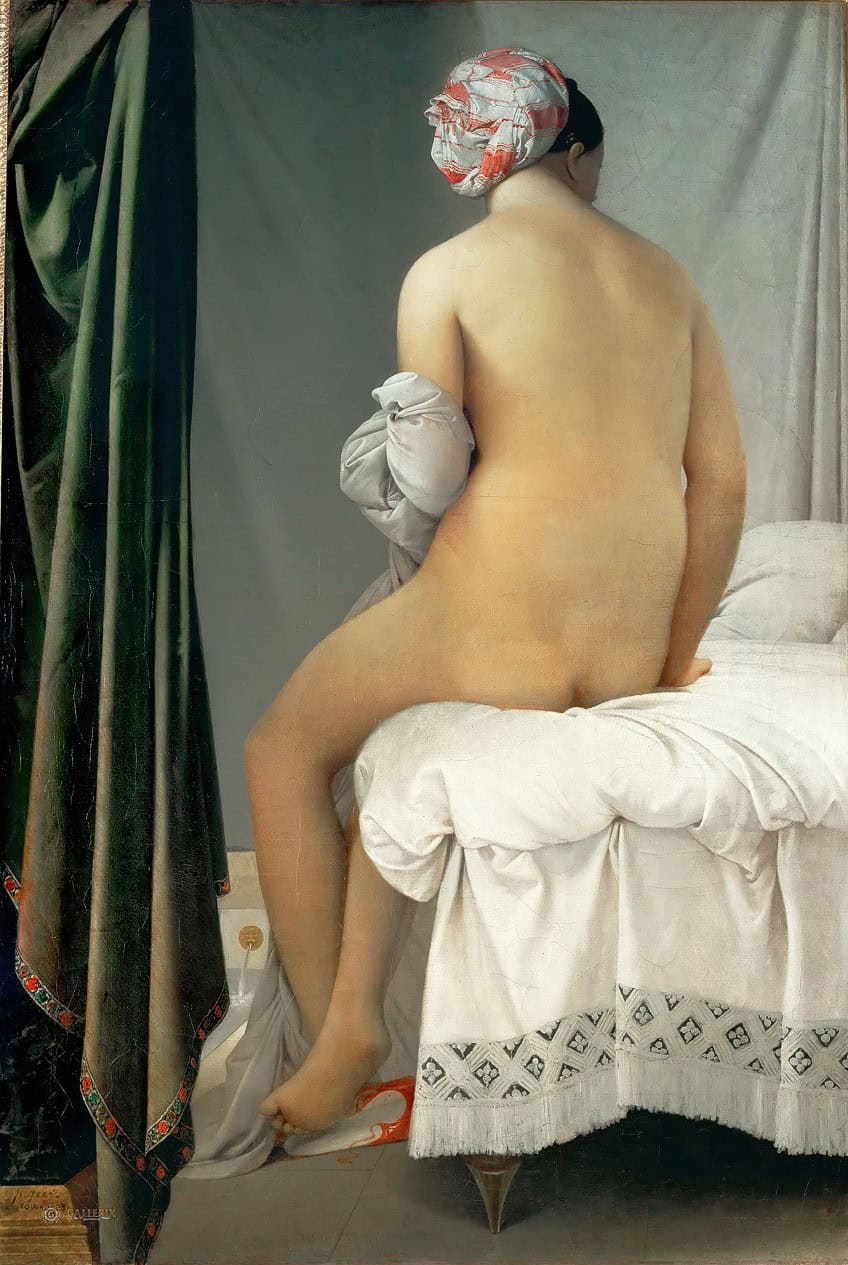
Neoclassical artists also revived Classical themes, ensuring ancient mythologies and histories were preserved. This cultural revival infused contemporary society with a renewed appreciation for its ancestral roots, impacting education and public art initiatives throughout Europe.
The legacy of Neoclassical artists remains influential, shaping the trajectory of Western art through their revival of classical ideals and their emphasis on moral and civic virtues. Artists like Jacques-Louis David, Jean-Auguste-Dominique Ingres, and Antonio Canova embodied the movement’s dedication to reason, beauty, and order, leaving an indelible mark on both art and culture. As a bridge between the Enlightenment and Romanticism, Neoclassicism continues to be celebrated for its refinement, discipline, and its profound reflection of the intellectual currents of its time.
Frequently Asked Questions
What Are the Defining Characteristics of Neoclassical Art?
Neoclassical art emphasizes simplicity, symmetry, and an adherence to classical principles. Artists focused on linear forms, rigidity, and a subdued color palette. The subject matter often depicted historical events, myths, and moralistic themes, aiming to evoke a sense of civic virtue and rationality.
Which Artists Are Considered Pioneers of the Neoclassical Movement?
Key pioneers include Jean-Auguste-Dominique Ingres, who was celebrated for his precise and clean lines, and Anton Raphael Mengs, known for his depiction of classical subjects like Parnassus. Both artists were instrumental in popularizing Neoclassicism through their works and teachings.
How Did Neoclassical Artists Differentiate Their Work from Rococo Styles?
Neoclassical artists moved away from the ornate and frivolous Rococo style by adopting a more restrained aesthetic. They favored solid compositions over the playful and elaborate embellishments typical of Rococo art. This shift was partly inspired by new archaeological discoveries and a revived interest in the art and philosophy of ancient Greece and Rome.
In What Ways Did Neoclassical Art Influence the Romanticism Movement?
While Neoclassical art laid the groundwork with its rationality and structured forms, Romanticism emerged as a response, focusing more on emotion and individualism. Romantic artists like Eugène Delacroix drew from Neoclassical techniques but sought to express the sublime and the dramatic, thereby expanding the possibilities of artistic expression beyond the confines of Neoclassical restraint.
Isabella studied at the University of Cape Town in South Africa and graduated with a Bachelor of Arts majoring in English Literature & Language and Psychology. Throughout her undergraduate years, she took Art History as an additional subject and absolutely loved it. Building on from her art history knowledge that began in high school, art has always been a particular area of fascination for her. From learning about artworks previously unknown to her, or sharpening her existing understanding of specific works, the ability to continue learning within this interesting sphere excites her greatly.
Her focal points of interest in art history encompass profiling specific artists and art movements, as it is these areas where she is able to really dig deep into the rich narrative of the art world. Additionally, she particularly enjoys exploring the different artistic styles of the 20th century, as well as the important impact that female artists have had on the development of art history.
Learn more about Isabella Meyer and the Art in Context Team.
Cite this Article
Isabella, Meyer, “Famous Neoclassical Artists – Masters of 18th Century Art.” Art in Context. November 2, 2024. URL: https://artincontext.org/famous-neoclassical-artists/
Meyer, I. (2024, 2 November). Famous Neoclassical Artists – Masters of 18th Century Art. Art in Context. https://artincontext.org/famous-neoclassical-artists/
Meyer, Isabella. “Famous Neoclassical Artists – Masters of 18th Century Art.” Art in Context, November 2, 2024. https://artincontext.org/famous-neoclassical-artists/.


